Ontario’s pharmacy vaccine rollout leaves some hard-hit communities with limited access to shots
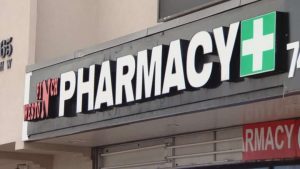
A month after Ontario began shipping COVID-19 vaccines to pharmacies around the province, an analysis by CBC News shows some of the hardest-hit neighbourhoods are still waiting while other communities with lower infection rates have a disproportionately high number of pharmacies offering shots.
How to get a COVID-19 vaccine in the Greater Toronto Area — if you qualify
The disparity suggests a shortcoming in what the province considers a key pillar of its vaccination program.
The Ministry of Health says by the end of the week, it intends to have authorized 1,400 pharmacies around the province to administer the AstraZeneca-Oxford vaccine. It has been increasing the number of locations by hundreds at a time since March 10.
A CBC News analysis found that in the 10 Toronto neighbourhoods with the highest COVID-19 infection rates over the past month, 19 per cent of retail pharmacies offer the vaccine.
However, in the ten neighbourhoods with the lowest infection rates over the past month, 43 per cent of retail pharmacies offer the vaccine.
In addition, two of the 10 neighbourhoods in Toronto reporting the highest COVID-19 infection rates still don’t have a single pharmacy offering the shot: Maple Leaf and Humbermede, both in the northwest of the city.
Although there are mass vaccination clinics in that part of the city, community advocates say that, for many people, a trip to their local pharmacy would be a more convenient and potentially less intimidating option. Many people already turn to their pharmacist for information on the immunization program.
“It’s been extremely, extremely challenging for lots of residents,” said Pablo Vivanco, the director of programs and services at the Jane/Finch Community and Family Centre, who has been advocating for more access to the vaccine in the northwestern neighbourhoods. “Certainly, it is something that someone should answer for.”
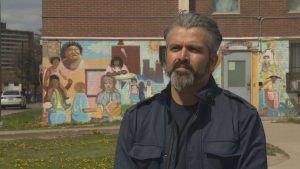
Similar discrepancies can be found throughout Ontario.
In Ottawa, for example, which has also experienced a surge in cases in the third wave of the pandemic, only 13 per cent of pharmacies are offering the AstraZeneca-Oxford vaccine. The province said Sunday it plans to make it available in 79 more locations in the city by the end of the week. That will raise the percentage of pharmacies offering the vaccine to 43.1.
By contrast, 64 per cent of retail pharmacies in Kingston have been giving the shot since early March. Kingston is not considered a hot spot based on the province’s own confirmed case data.
Pharmacies say they can’t meet program criteria
After initially being criticized by some physicians and residents in Toronto who called the distribution of the first 300 vaccination locations inequitable, the province committed to prioritizing pharmacies in vulnerable areas with high numbers of COVID-19 cases.
Toronto’s Humbermede neighbourhood, which stretches about three kilometres from east to west across a northwest corner of Toronto, has only five pharmacies to serve a population of more than 15,000 people, many living in one of the city’s lowest-income areas.
None of the five retail pharmacies in the area offer the AstraZeneca-Oxford vaccine.
CBC News contacted all five pharmacies to ask why they were not offering shots.
Two said they did not have enough space to deliver vaccines, while two others said their pharmacy did not meet the province’s selection criteria, but they would like to start providing vaccines. One did not respond to the CBC’s request for comment.
“I would like to help,” said Hatem Abou El Nile, who is a pharmacist and manager at the Finch-Weston Medical Pharmacy. “I have the infrastructure to store the vaccine, I am trained to administer injections, and then I would need the green light to go.”
Abou El Nile says he initially didn’t enrol because his pharmacy didn’t participate in last year’s influenza vaccination campaign, which was one of the province’s conditions for approving pharmacies to administer the COVID-19 vaccine.
Pharmacies also must commit to administering a minimum average of 40 injections per day, according to the Ontario Pharmacists Association’s website.
Abou El Nile says he’s received frequent inquiries about the vaccine in recent weeks, along with seeing a worrying spike of his customers reporting COVID-like symptoms.
“Something needs to be done to expand the vaccination program in the area here where it is definitely badly needed,” he said.
His pharmacy has been part of the neighbourhood for 25 years. He says many of his customers don’t speak English as a first language and don’t have easy access to the internet, instead trusting him and his staff to explain the risks and importance of being vaccinated against COVID-19.
“We encourage them to enrol,” he said, “but the fact is that some of them would also have difficulty booking appointments online. Here, the role of the pharmacist is to fill these gaps.”
Those gaps, including the disparity in access to vaccines found in the CBC’s pharmacy analysis, should have been flagged earlier in the process, says Ashleigh Tuite, an infectious disease epidemiologist and an assistant professor at the University of Toronto’s Dalla Lana School of Public Health.
“We need to look neighbourhood by neighbourhood, specifically in these hot spots, and do exactly what you’ve done, which is reach out and understand what these barriers are and come up with solutions,” said Tuite. “I don’t think we should just throw up our hands and say, ‘Well, we tried this and it didn’t work. Oh well.'”
Pharmacy deserts in low-income communities
Beyond the province’s selection criteria, the CBC News analysis points to a systemic issue that could also be making it harder to get the vaccines out: several of the most vulnerable neighbourhoods don’t have many retail pharmacies.
The neighbourhood of Maple Leaf, a community of 10,000 residents in northwest Toronto, right next to Humbermede, has no pharmacy at all. That means residents may have to weigh the COVID-19 exposure risks of taking a lengthy trip using public transit to get to a pharmacy vaccine location.
In Toronto, nine of the 10 neighbourhoods with the most retail pharmacies per capita also reported infection rates well below the city’s average last month.
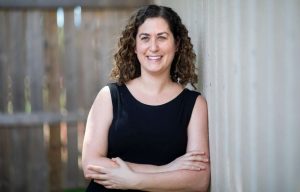
“If you have a vaccine distribution plan that’s really relying on using pharmacists, you should start off by verifying that that’s going to be able to get to the neighbourhoods that you want to go to,” Tuite said.
It’s time for the government to rethink its strategy, she said. “One of the things that’s become really, really clear is that it’s not a one-size-fits-all approach.”
Tuite says she wants the province to think creatively, perhaps by choosing other stores or community spaces that are more equitably distributed in the city and bringing pharmacists there.
The Ministry of Health did not respond to specific questions from CBC News about the province’s vaccination rollout. In addition to pharmacies, the government is also distributing vaccines to mass vaccination sites and mobile clinics, and Premier Doug Ford announced on April 13 that the province is exploring other delivery options such as workplace clinics.






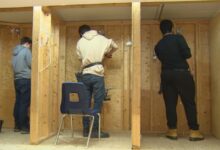
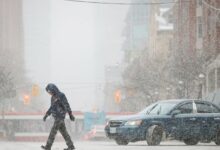
Redes Sociais - Comentários